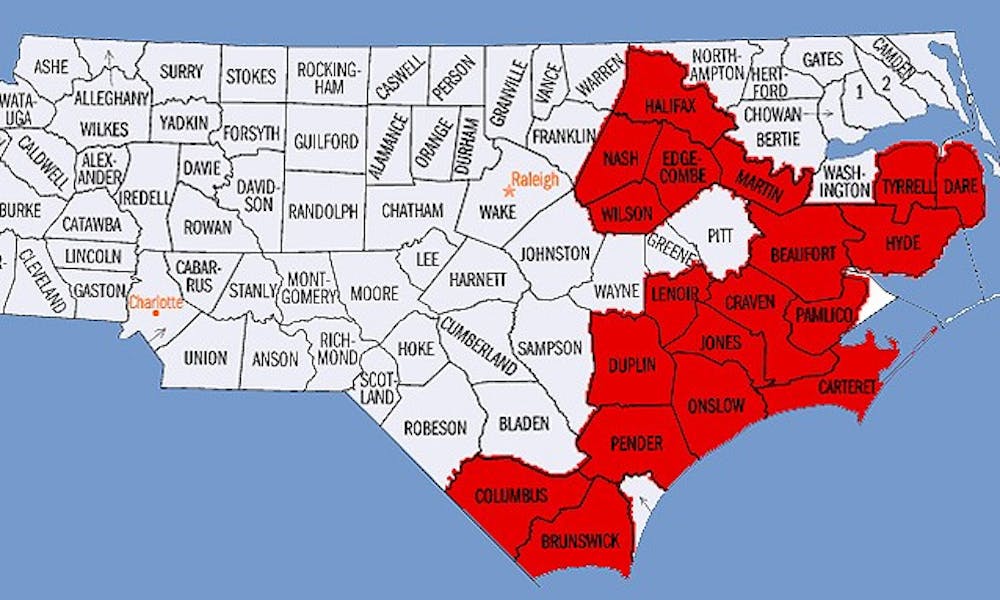Eastern North Carolina is on the path to recovery following the damage caused by Hurricane Irene, government officials said.
Gov. Bev Perdue said in a Friday news release that damage estimates top $400 million—including $320 million in crop damage, $40 million in uninsured home and business losses and $45 million in costs to local governments. Perdue also obtained public assistance for 20 eastern counties to apply for public assistance from the Federal Emergency Management Agency to fund debris removal and infrastructure repair. Individuals and businesses in 33 total counties can apply for assistance from FEMA for damages related to Irene not covered by property insurance.
Perdue also established the N.C. Disaster Relief Fund that collects private donations and distributes them to community organizations that assist in long-term relief efforts such as home repairs, according to her website.
“Our fellow North Carolinians who were affected by this storm need to get back in their homes or reopen their businesses as quickly as possible,” Perdue said in a Sunday news release. “That’s why we have aggressively pressed for all of the assistance that’s available to them.”
Hurricane Irene made landfall Aug. 27 as a Category 1 storm. Although the Triangle area received one to two inches of rain, areas east of Interstate 95 saw as much as six inches of rain. The storm claimed six victims in the coastal areas and caused 525,000 power outages and 228 road closures across the state before moving north along the East Coast, N.C. Emergency Management Division officials said.
Despite concerns that FEMA may not meet funding obligations after a spate of natural disasters this year, Perdue is confident that North Carolinians will receive the assistance they need, Perdue’s press secretary Chris Mackey said in an interview.
“I don’t think there is any indication that a funding shortage is a problem after Irene,” Mackey said. “Gov. Perdue is mainly concerned about the future development of the eastern region.”
FEMA has not yet established an accurate total of the cost of covering damages, said Mary Hudak, a spokesperson for the agency’s southeast region. Residents and businesses will have 60 days to apply for FEMA assistance following the approval of eligibility.
“We encourage folks to apply as soon as they’ve talked to their insurance company about what [their provider] won’t cover,” Hudak said. “Insurance is really your principal first line of recovery—if the insurance does not cover things, then FEMA will consider you for additional assistance.”
As of 4 a.m. Monday, FEMA had approved 735 applications and approximately $5.7 million for individual assistance in North Carolina, according to its website.
The cost of public assistance is also unclear, Hudak said, though FEMA is working with the state and local governments to assess the extent of damage to public infrastructure.
The FEMA website also indicated that Carteret County, home of the Duke Marine Lab, is among the counties eligible for both public and individual assistance from FEMA.
The Marine Lab was evacuated one day before Irene made landfall, and damage to the facility was limited to some shingles ripped off the roof of one building, The Chronicle reported. Other areas of the county experienced power outages and were difficult to access due to fallen trees and debris.
County officials could not be reached for comment on current recovery efforts.
While the lab itself sustained minimal damages from the storm, some staff members living in the area had to deal with the repercussions of the hurricane, Marine Lab Director Cindy Van Dover wrote in an email.
Get The Chronicle straight to your inbox
Signup for our weekly newsletter. Cancel at any time.

